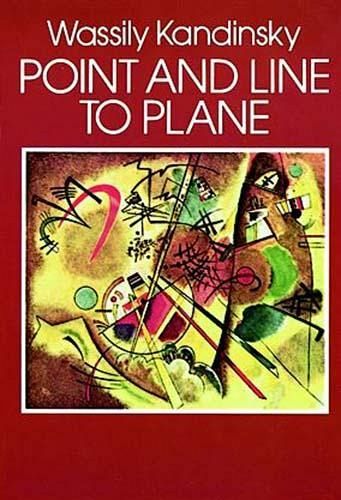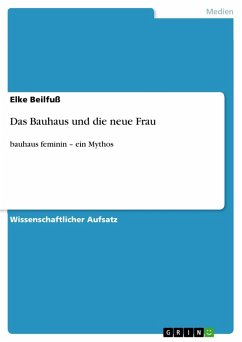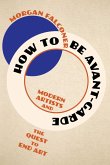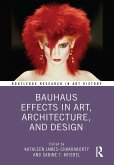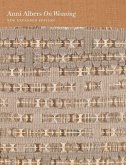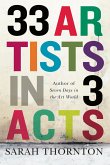Wassily Kandinsky
Point and Line to Plane (eBook, ePUB)
11,95 €
11,95 €
inkl. MwSt.
Sofort per Download lieferbar

6 °P sammeln
11,95 €
Als Download kaufen

11,95 €
inkl. MwSt.
Sofort per Download lieferbar

6 °P sammeln
Jetzt verschenken
Alle Infos zum eBook verschenken
11,95 €
inkl. MwSt.
Sofort per Download lieferbar
Alle Infos zum eBook verschenken

6 °P sammeln
Wassily Kandinsky
Point and Line to Plane (eBook, ePUB)
- Format: ePub
- Merkliste
- Auf die Merkliste
- Bewerten Bewerten
- Teilen
- Produkt teilen
- Produkterinnerung
- Produkterinnerung
- Weitere 5 Ausgaben:
- Gebundenes Buch
- Gebundenes Buch
- Broschiertes Buch
- Broschiertes Buch
- Broschiertes Buch

Bitte loggen Sie sich zunächst in Ihr Kundenkonto ein oder registrieren Sie sich bei
bücher.de, um das eBook-Abo tolino select nutzen zu können.
Hier können Sie sich einloggen
Hier können Sie sich einloggen
Sie sind bereits eingeloggt. Klicken Sie auf 2. tolino select Abo, um fortzufahren.

Bitte loggen Sie sich zunächst in Ihr Kundenkonto ein oder registrieren Sie sich bei bücher.de, um das eBook-Abo tolino select nutzen zu können.
- Geräte: eReader
- mit Kopierschutz
- eBook Hilfe
- FamilySharing(5)
Andere Kunden interessierten sich auch für
![Das Bauhaus und die neue Frau (eBook, ePUB) Das Bauhaus und die neue Frau (eBook, ePUB)]() Elke BeilfußDas Bauhaus und die neue Frau (eBook, ePUB)5,99 €
Elke BeilfußDas Bauhaus und die neue Frau (eBook, ePUB)5,99 €![How to Be Avant-Garde (eBook, ePUB) How to Be Avant-Garde (eBook, ePUB)]() Morgan FalconerHow to Be Avant-Garde (eBook, ePUB)17,95 €
Morgan FalconerHow to Be Avant-Garde (eBook, ePUB)17,95 €![Bauhaus Effects in Art, Architecture, and Design (eBook, ePUB) Bauhaus Effects in Art, Architecture, and Design (eBook, ePUB)]() Bauhaus Effects in Art, Architecture, and Design (eBook, ePUB)39,95 €
Bauhaus Effects in Art, Architecture, and Design (eBook, ePUB)39,95 €![On Weaving (eBook, ePUB) On Weaving (eBook, ePUB)]() Anni AlbersOn Weaving (eBook, ePUB)42,95 €
Anni AlbersOn Weaving (eBook, ePUB)42,95 €![The Image of Environmental Harm in American Social Documentary Photography (eBook, ePUB) The Image of Environmental Harm in American Social Documentary Photography (eBook, ePUB)]() Chris BalaschakThe Image of Environmental Harm in American Social Documentary Photography (eBook, ePUB)39,95 €
Chris BalaschakThe Image of Environmental Harm in American Social Documentary Photography (eBook, ePUB)39,95 €![Designing Interventions to Address Complex Societal Issues (eBook, ePUB) Designing Interventions to Address Complex Societal Issues (eBook, ePUB)]() Designing Interventions to Address Complex Societal Issues (eBook, ePUB)39,95 €
Designing Interventions to Address Complex Societal Issues (eBook, ePUB)39,95 €![33 Artists in 3 Acts (eBook, ePUB) 33 Artists in 3 Acts (eBook, ePUB)]() Sarah Thornton33 Artists in 3 Acts (eBook, ePUB)9,95 €
Sarah Thornton33 Artists in 3 Acts (eBook, ePUB)9,95 €-
-
-
Produktdetails
- Verlag: Dover Publications
- Erscheinungstermin: 15. März 2012
- Englisch
- ISBN-13: 9780486136240
- Artikelnr.: 39139121
Dieser Download kann aus rechtlichen Gründen nur mit Rechnungsadresse in A, B, BG, CY, CZ, D, DK, EW, E, FIN, F, GR, HR, H, IRL, I, LT, L, LR, M, NL, PL, P, R, S, SLO, SK ausgeliefert werden.
- Herstellerkennzeichnung Die Herstellerinformationen sind derzeit nicht verfügbar.
Wassily Wassilyevich Kandinsky (16 December [O.S. 4 December] 1866 - 13 December 1944) was a Russian painter and art theorist. Kandinsky is generally credited as the pioneer of abstract art.[1] Born in Moscow, Kandinsky spent his childhood in Odessa (today Ukraine), where he graduated at Grekov Odessa Art school. He enrolled at the University of Moscow, studying law and economics. Successful in his profession-he was offered a professorship (chair of Roman Law) at the University of Dorpat (today Tartu, Estonia)-Kandinsky began painting studies (life-drawing, sketching and anatomy) at the age of 30. In 1896, Kandinsky settled in Munich, studying first at Anton A¿be's private school and then at the Academy of Fine Arts. He returned to Moscow in 1914, after the outbreak of World War I. Following the Russian Revolution, Kandinsky "became an insider in the cultural administration of Anatoly Lunacharsky"[2] and helped establish the Museum of the Culture of Painting.[3] However, by then "his spiritual outlook... was foreign to the argumentative materialism of Soviet society",[4] and opportunities beckoned in Germany, to which he returned in 1920. There he taught at the Bauhaus school of art and architecture from 1922 until the Nazis closed it in 1933. He then moved to France, where he lived for the rest of his life, becoming a French citizen in 1939 and producing some of his most prominent art. He died in Neuilly-sur-Seine in 1944. Kandinsky was born in Moscow, the son of Lidia Ticheeva and Vasily Silvestrovich Kandinsky, a tea merchant.[5][6] One of his great grandmothers was a Princess Gantimurova, probably explaining the "slight Mongolian trait in his features".[7] Kandinsky learned from a variety of sources while in Moscow. He studied many fields while in school, including law and economics. Later in life, he would recall being fascinated and stimulated by colour as a child. His fascination with colour symbolism and psychology continued as he grew. In 1889, he was part of an ethnographic research group which travelled to the Vologda region north of Moscow. In Looks on the Past, he relates that the houses and churches were decorated with such shimmering colours that upon entering them, he felt that he was moving into a painting. This experience, and his study of the region's folk art (particularly the use of bright colours on a dark background), was reflected in much of his early work. A few years later he first likened painting to composing music in the manner for which he would become noted, writing, "Colour is the keyboard, the eyes are the hammers, the soul is the piano with many strings. The artist is the hand which plays, touching one key or another, to cause vibrations in the soul".[8] Kandinsky was also the uncle of Russian-French philosopher Alexandre Kojève (1902-1968).
